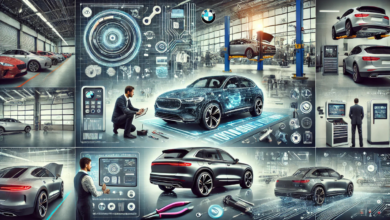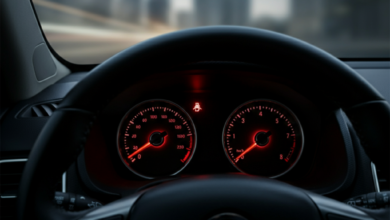Custom Injection Molding for Automotive Plastic Parts

Custom injection molding for automotive plastic parts plays a pivotal role in the ongoing innovation in the automotive industry, enabling manufacturers to produce high-performance, cost-effective, and lightweight components. Automotive injection molders, specializing in this field, are key players driving this transformation by leveraging advanced molding technologies and materials.
As the automotive sector continues to evolve, this advanced manufacturing process is becoming increasingly crucial in meeting the demands for improved vehicle efficiency, safety, and sustainability. In this article, we will explore the significance of custom plastic injection molding for automotive parts, its advantages, and how it is reshaping the future of vehicle manufacturing.
Introduction to Automotive Plastic Injection Molding and Manufacturing Process
Plastic injection molding has become an essential component of modern automotive manufacturing. It allows for the creation of complex, durable, and high-performance parts at a lower cost and faster production speed compared to traditional manufacturing methods.
Importance in Automotive Manufacturing
In the automotive industry, plastic injection molding is crucial because it enables the mass production of precision parts that are lightweight, durable, and capable of withstanding the extreme conditions of modern vehicles. As cars become more advanced and efficient, the demand for complex, high-quality plastic parts continues to rise. Injection molding meets this demand by providing cost-effective solutions for mass-producing these parts.
Efficiency and Cost Reduction
One of the most significant advantages of plastic injection molding is its ability to reduce manufacturing costs. By using high-volume production processes, manufacturers can produce parts with minimal waste, lowering material costs. Additionally, the automation of the molding process reduces labor costs and shortens production cycles. This results in significant savings for automakers, which can then be passed on to consumers in the form of more affordable vehicles.
Basic Process and Technical Requirements
Injection molding involves injecting molten plastic into a custom-designed mold, where it cools and solidifies into the desired part shape. This process is highly automated and precise, making it ideal for producing complex parts in large quantities. It also allows for quick turnaround times, essential for the fast-paced automotive industry. Optimizing mold design and material selection is crucial for minimizing production costs and ensuring high-quality outputs.
Advantages of Lightweight Plastic Parts in Automotive Design
The automotive industry is increasingly focused on reducing vehicle weight to improve fuel efficiency and overall performance. Lightweight plastic parts have become integral to achieving these goals.
Impact on Fuel Efficiency and Battery Range
Incorporating lightweight plastic parts into vehicle design can significantly improve fuel efficiency, especially for internal combustion engine vehicles, and extend the driving range for electric vehicles. Plastic components, which are lighter than their metal counterparts, reduce the overall weight of the vehicle, thus improving energy efficiency and lowering carbon emissions.
Enhanced Safety and Durability
Plastic materials are not only lightweight but also incredibly strong and durable. They can withstand impact forces better than many metals and are highly resistant to corrosion, which improves the longevity and safety of the vehicle. For example, plastic bumpers and body panels can absorb energy during collisions, reducing the risk of damage to the vehicle and improving passenger safety.
Design Flexibility and Cost Efficiency
Plastic parts offer greater design flexibility, allowing manufacturers to create more complex shapes and structures that would be difficult or impossible to achieve with metal. This flexibility leads to innovative designs and features, such as intricate interior components and aerodynamically optimized body panels. Moreover, plastics are cost-effective compared to metals, allowing manufacturers to maintain low production costs while achieving high-quality, durable products.
Key Applications of Plastic Parts in the Automotive Industry
Plastic injection molding is used across various components in vehicles, both in the interior and exterior, as well as in critical functional systems.
Interior and Exterior Parts
In automotive design, plastic is widely used for interior and exterior components, including dashboards, seat shells, bumpers, grille covers, and mirror housings. Plastics such as ABS (Acrylonitrile Butadiene Styrene) and polypropylene (PP) are commonly used in these parts due to their durability, aesthetic appeal, and cost-effectiveness. The lightweight nature of plastic also contributes to overall vehicle weight reduction, a key factor in enhancing performance and fuel efficiency.
Functional Components
Plastic parts are also essential for various functional systems in a vehicle, including fuel tanks, air conditioning units, battery cooling systems, and engine components. Plastic components in these areas are not only lightweight but also offer resistance to chemicals, heat, and environmental factors, making them ideal for use in automotive applications where performance and durability are paramount.
Lightweighting and Structural Optimization
With the shift toward lightweighting, manufacturers are increasingly replacing metal parts with plastic in structural areas of the vehicle. For example, plastic can replace heavy metal parts in doors, panels, and pedal systems, offering significant weight savings without compromising strength or safety.
Material Selection for Automotive Plastic Parts
Choosing the right material for plastic components is essential to ensure that the parts meet performance, durability, and cost requirements.
Common Materials Used
Various plastic materials are used in automotive manufacturing, each chosen for its unique properties. ABS is commonly used for interior parts due to its strength and impact resistance. Polypropylene (PP) is often used for exterior components because of its resistance to chemical corrosion and its ability to withstand high temperatures. Polyamide (PA) and polycarbonate (PC) are also popular choices for high-performance components that require strength and durability.
Material Comparison and Selection Criteria
The selection of materials depends on the specific requirements of the part, including factors such as strength, flexibility, heat resistance, and cost. For instance, if a component is exposed to high temperatures, a material with excellent heat resistance, like polyamide (PA), may be preferred. Additionally, the choice of material must consider the manufacturing process, as different materials may require different molding techniques.
Future of High-Performance Composite Materials
The future of automotive plastics will likely involve greater use of composite materials, including fiber-reinforced plastics (FRP) and thermoplastic composites. These materials offer enhanced strength and durability while maintaining low weight, making them ideal for advanced automotive applications, such as structural components and battery housing.
Sustainability and Future Outlook: Shaping the Future of Automotive Manufacturing
Recyclable Plastics and Green Manufacturing
With a growing emphasis on reducing environmental impact, the use of recyclable plastics in automotive manufacturing is becoming more common. Recyclable plastics help reduce waste and the overall carbon footprint of vehicle production. By adopting green manufacturing practices, automakers can contribute to a more sustainable future.
Technological Innovations for Lightweighting and Performance
The future of automotive plastic injection molding lies in advanced materials and innovative molding techniques that further improve vehicle lightweighting, energy efficiency, and performance. From electric vehicle components to high-performance battery cooling systems, plastic injection molding will continue to evolve to meet the demands of the next generation of vehicles.
Driving Innovation in Automotive Manufacturing
The automotive industry is undergoing a transformation, with plastic injection molding serving as a critical tool for achieving lighter, more efficient, and safer vehicles. As technological advancements continue to push the boundaries of what is possible, the role of custom plastic injection molding will only become more significant.
If you’re looking for customized injection molding solutions, rapid prototyping, or support for your automotive manufacturing needs, we invite you to contact us. Together, we can create innovative and sustainable solutions that drive the future of automotive manufacturing.




